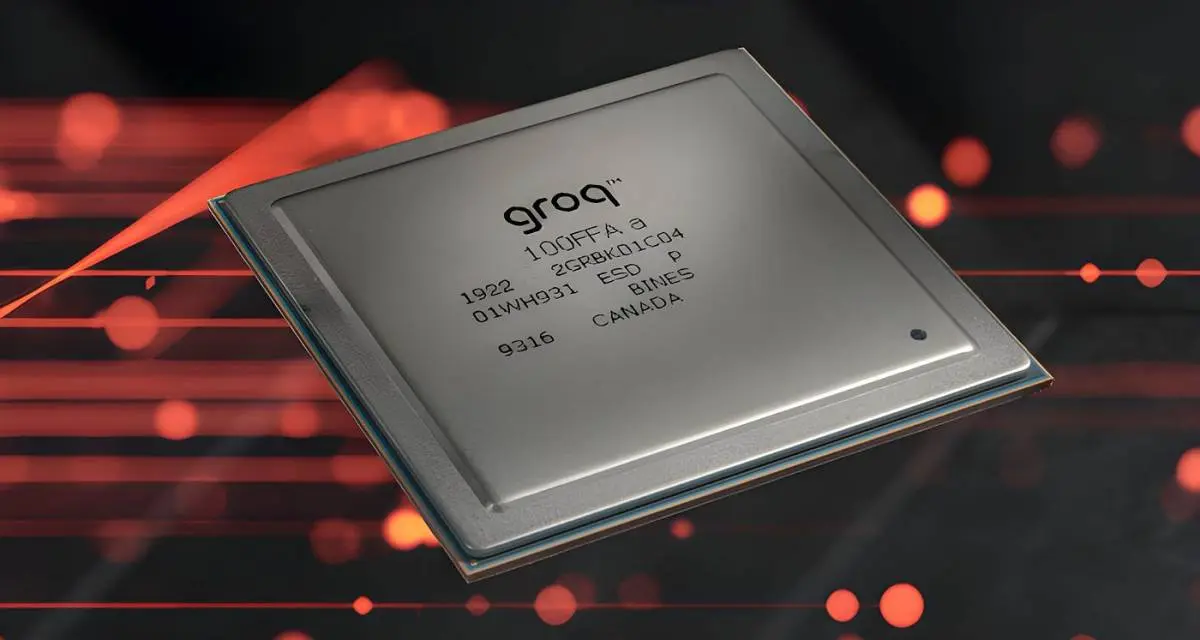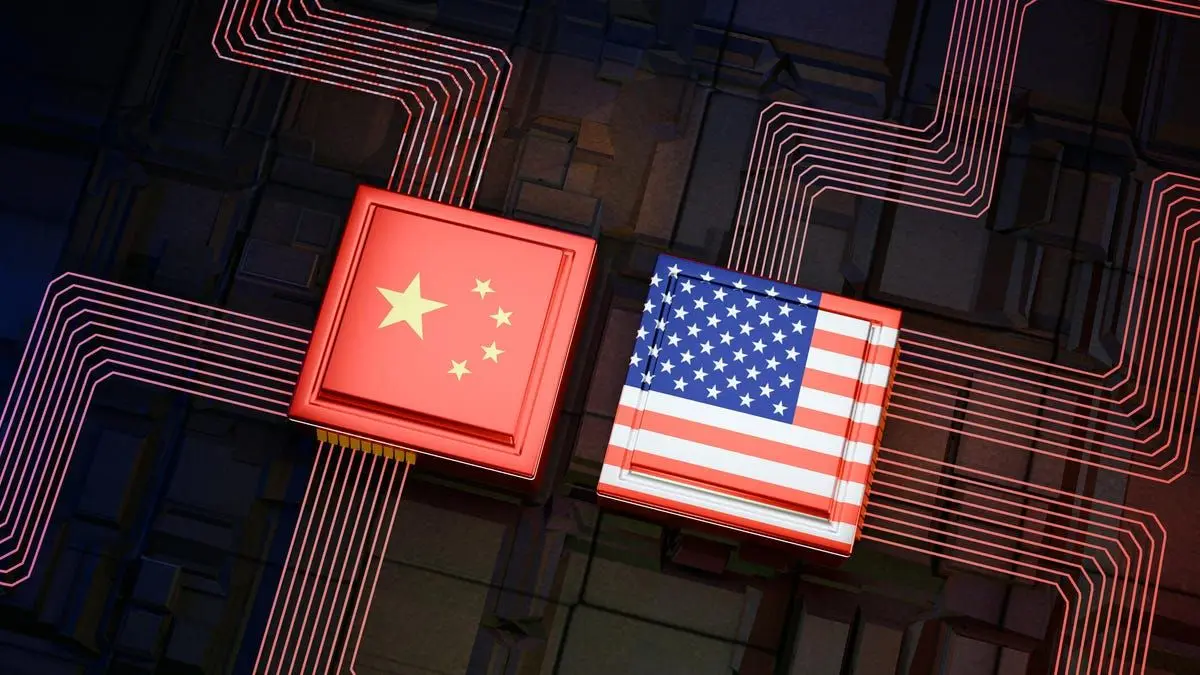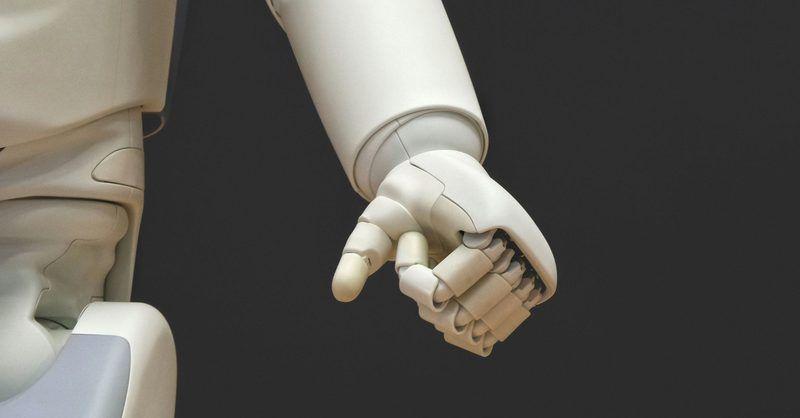Nvidia's Investment Sparks 225% Surge in AI Robotics Stock
3 Sources
3 Sources
[1]
Up 233% Since Nvidia's Investment, Is It Too Late to Buy This Robotics Stock?
With the onset of the artificial intelligence (AI) revolution, semiconductor company Nvidia (NVDA) has been the market darling. Any company that Nvidia expresses even the slightest interest in, captures everybody's attention. SoundHound AI (SOUN) was one of these under-the-radar penny stocks. It is a pure-play voice AI technology company that skyrocketed in March after Nvidia disclosed a $3.7 million investment in SOUN via its first-ever 13F filing. SOUN stock is up 126.9% year-to-date (YTD), outperforming the S&P 500 Index's ($SPX) roughly 15% gain. More recently, another small robotics company that has captured Nvidia's attention is Serve Robotics (SERV). On July 18, Nvidia disclosed a 10% ownership stake worth $3.7 million in Serve, boosting the stock to a gain of 187% last Friday. The shares are up 233% in total since the news broke, which follows shortly after SERV's uplisting to the Nasdaq on April 18. Let's find out what made Nvidia decide to invest in this robotics stock, and whether it's a good buy right now. About Serve Robotics Serve Robotics (SERV) was spun out of Postmates, a food delivery company that Uber Technologies (UBER) acquired in 2020. Valued at $348.7 million, Serve creates advanced, AI-powered, low-emission sidewalk delivery robots. The spinoff allowed Serve Robotics to concentrate solely on the development and deployment of autonomous sidewalk delivery robots. Last-mile delivery solutions are in high demand, owing to the e-commerce boom and the need for contactless delivery options that arose during the global pandemic. The autonomous robots developed by Serve Robotics offer a one-of-a-kind solution for businesses looking to reduce delivery costs and improve efficiency. In 2023, Serve formed a partnership with Uber to deploy up to 2,000 AI-powered sidewalk delivery robots on the Uber Eats platform in multiple U.S. markets. In April of this year, Serve expanded its partnership with long-term licensing partner Magna International to manufacture delivery robots for Uber Eats. In May, the company reported its first quarter of 2024 results following the uplisting, which included a public equity offering. Total revenue increased 124% sequentially, reaching $0.95 million. In Q1, SERV averaged 300 daily supply hours, a 97% increase over the year-ago period, as well as a 70% increase in daily active robots. The company has secured significant funding for now. It raised $40 million in gross proceeds from the Nasdaq listing, giving the company a solid foundation and the capital it needed to accelerate growth. It also received a $4.5 million investment from its shareholders and strategic partner, Postmates. Furthermore, at the end of the quarter, SERV held $0.43 million in cash and cash equivalents. SOUN vs. SERV Nvidia's interest in SoundHound AI was undoubtedly justified. SoundHound's finances are soaring as it solidifies its position in the AI customer service market across multiple industries. The same could be true for Serve Robotics. Serve specified in its May 2024 investor presentation that Nvidia has a total investment of close to $12 million, and Nvidia has been its technical partner since 2018. In addition to Nvidia, Uber has also invested $11.5 million. Other early investors in SERV include 7-Eleven and Delivery Hero. However, Serve Robotics is still in its early stages, which means it is more concerned with scaling operations than with generating significant profits. It could be a while before the company begins to deliver consistent profits. Analysts covering SERV expect it to post $1.64 million in revenue in 2024, with revenue increasing a whopping 877% year-over-year to $16 million in 2025. What is Wall Street Saying About Serve Robotics Stock? Overall, SERV is a "moderate buy" on Wall Street. Out of the nine analysts covering the stock, five rate it a "strong buy," one rates it a "moderate buy," two suggest it's a "hold," and one recommends a "moderate sell." The average target price of $46.25 implies a potential upside of 430%. The Bottom Line on Nvidia's SERV Stake While Nvidia has not disclosed the reason for its investment in Serve Robotics, a 10% stake in the company suggests confidence in SERV's long-term growth prospects. Theglobal marketfor autonomous delivery robots is expected to grow at a compound annual growth rate of 26.4%, reaching $2.97 billion by 2031. Furthermore, backed by two powerful tech companies - Uber and Nvidia - SERV is well-positioned to capitalize on this trend with its advanced technology. However, the company relies on a single client for a chunk of its revenue. While Serve Robotics has a long way to go, I believe it could be a compelling opportunity in the rapidly growing robotics industry. That said, investors should be aware that Serve Robotics, like many other tech startups, may experience financial volatility as it expands its operations. I would recommend keeping an eye on Serve Robotics and starting with a small stake as it strengthens its financials. On the date of publication, Sushree Mohanty did not have (either directly or indirectly) positions in any of the securities mentioned in this article. All information and data in this article is solely for informational purposes. For more information please view the Barchart Disclosure Policy here. The views and opinions expressed herein are the views and opinions of the author and do not necessarily reflect those of Nasdaq, Inc.
[2]
Meet the Artificial Intelligence (AI) Stock That Just Soared 225% Thanks to Nvidia
Nvidia's graphics processing units (GPUs) for data centers are used to develop the most advanced artificial intelligence (AI) models in the world, placing the company at the forefront of this new technological revolution. Nvidia has consistently delivered triple-digit growth in its revenue over the past year, catapulting the company to a whopping $2.9 trillion valuation. Now, it's spreading some of its wealth by investing in a growing portfolio of other AI stocks, including top performers like SoundHound AI and Arm Holdings. According to a July 18 regulatory filing, Nvidia just converted a promissory note to acquire over 1 million shares in autonomous last-mile delivery company Serve Robotics (NASDAQ: SERV). Nvidia has now invested a total of $12 million in Serve (dating back to 2022), taking ownership of 3.7 million shares representing 10% of the entire company. Serve stock soared 225% when investors learned of Nvidia's latest move, but should you follow the chip giant's lead and buy in? Image source: Getty Images. Using AI to build a network of autonomous delivery robots According to Statista, the U.S. food delivery industry is set to generate over $353 billion in revenue this year. DoorDash is the most popular service, with a market share of 67%, followed by Uber's Uber Eats with 23%. Both platforms rely on human drivers to pick up orders from restaurants and deliver them to customers. Serve Robotics says drivers travel a median distance of just 2.5 miles per delivery, and its recent investor presentation poses a thoughtful question: Why do we use a 2-ton car to deliver a 2-pound burrito? The company says advancements in AI, combined with the falling cost of sensor components and data center computing power, are creating an economical market for robot-led deliveries. Serve designed its own robots with Level 4 autonomy, which means they can safely drive on the sidewalk using AI instead of human intervention. The company deployed 100 robots in Los Angeles in 2022 as part of a pilot program, and they have completed over 50,000 deliveries on behalf of 300 restaurants. They reported just 0.5 failures per 1,000 orders (a 99.94% success rate), making them 10 times more reliable than human drivers. Serve's robots are already available on Uber Eats in Los Angeles, but it will deploy 2,000 new robots in 2025 to enter the San Diego, Dallas, and Vancouver markets. The new fleet will be exclusively manufactured by Magna International, a $12 billion parts supplier to the automotive industry. As part of the deal, Magna will pay Serve a licensing fee to use its technology to create other autonomous robots outside of the food delivery space, which provides Serve with a new revenue stream. Serve generates very little revenue right now, but it's growing quickly Serve brought in just $207,545 in revenue last year, which is a very small number, but it was almost double the amount it generated in 2022. Its growth will accelerate significantly in 2024, because the company already produced $946,711 in revenue during the first quarter alone. The majority of that ($850,000) was attributed to the Magna licensing deal, which means Serve generated around $100,000 in revenue from its food delivery business. While the company is clearly making progress, it's burning through cash at an alarming rate. It lost $9 million in Q1 alone after racking up $8.3 million in operating costs, which included $6.6 million in research and development spending and $1 million in admin costs. That means Serve is on track to lose substantially more than the $20.7 million it lost in 2023. Don't rush to buy Serve stock just yet Serve's losses are concerning because the company clearly needs substantial amounts of money to achieve scale. It just completed a $40 million equity raise from investors in April, when it was uplisted to the Nasdaq exchange from its OTC Markets listing. Serve had a cash balance of $34.2 million at the end of April, and based on its recent losses, it could require fresh capital within the next 12 months. That means investors who buy the stock today could face significant dilution if the company has to issue more shares. On the plus side, Uber and Nvidia are two of Serve's largest investors, and it's reasonable to assume they will step in to fund the start-up as it scales. But Serve's valuation is another reason investors should think twice before buying the stock. Following its recent 225% gain, the company now has a market capitalization of $280 million. We know for sure that Serve will generate $1.2 million in revenue from the Magna deal this year, along with potentially $400,000 in delivery revenue if we extrapolate its Q1 result. That gives Serve stock a forward price-to-sales (P/S) ratio of 175, making it 7 times more expensive than Nvidia stock, which trades at a forward P/S multiple of 24. While Nvidia's backing is a huge vote of confidence for Serve's business, keep in mind it's a $2.9 trillion company and it can certainly afford to lose the estimated $12 million it has invested so far. Here's a mind-boggling calculation: If you had a net worth of $100,000, it would be the equivalent of your losing $0.40. Yes, 40 cents. So while the Serve Robotics story is exciting, its stock should be reserved for investors who have a very high tolerance for risk. Should you invest $1,000 in Serve Robotics right now? Before you buy stock in Serve Robotics, consider this: The Motley Fool Stock Advisor analyst team just identified what they believe are the 10 best stocks for investors to buy now... and Serve Robotics wasn't one of them. The 10 stocks that made the cut could produce monster returns in the coming years. Consider when Nvidia made this list on April 15, 2005... if you invested $1,000 at the time of our recommendation, you'd have $757,001!* Stock Advisor provides investors with an easy-to-follow blueprint for success, including guidance on building a portfolio, regular updates from analysts, and two new stock picks each month. The Stock Advisor service has more than quadrupled the return of S&P 500 since 2002*. Anthony Di Pizio has no position in any of the stocks mentioned. The Motley Fool has positions in and recommends DoorDash, Nvidia, OTC Markets Group, and Uber Technologies. The Motley Fool recommends Magna International and Nasdaq. The Motley Fool has a disclosure policy. The views and opinions expressed herein are the views and opinions of the author and do not necessarily reflect those of Nasdaq, Inc.
[3]
Meet the Artificial Intelligence (AI) Stock That Just Soared 225% Thanks to Nvidia | The Motley Fool
Nvidia's portfolio of artificial intelligence (AI) stocks continues to grow. Nvidia's graphics processing units (GPUs) for data centers are used to develop the most advanced artificial intelligence (AI) models in the world, placing the company at the forefront of this new technological revolution. Nvidia has consistently delivered triple-digit growth in its revenue over the past year, catapulting the company to a whopping $2.9 trillion valuation. Now, it's spreading some of its wealth by investing in a growing portfolio of other AI stocks, including top performers like SoundHound AI and Arm Holdings. According to a July 18 regulatory filing, Nvidia just converted a promissory note to acquire over 1 million shares in autonomous last-mile delivery company Serve Robotics (SERV 7.18%). Nvidia has now invested a total of $12 million in Serve (dating back to 2022), taking ownership of 3.7 million shares representing 10% of the entire company. Serve stock soared 225% when investors learned of Nvidia's latest move, but should you follow the chip giant's lead and buy in? According to Statista, the U.S. food delivery industry is set to generate over $353 billion in revenue this year. DoorDash is the most popular service, with a market share of 67%, followed by Uber's Uber Eats with 23%. Both platforms rely on human drivers to pick up orders from restaurants and deliver them to customers. Serve Robotics says drivers travel a median distance of just 2.5 miles per delivery, and its recent investor presentation poses a thoughtful question: Why do we use a 2-ton car to deliver a 2-pound burrito? The company says advancements in AI, combined with the falling cost of sensor components and data center computing power, are creating an economical market for robot-led deliveries. Serve designed its own robots with Level 4 autonomy, which means they can safely drive on the sidewalk using AI instead of human intervention. The company deployed 100 robots in Los Angeles in 2022 as part of a pilot program, and they have completed over 50,000 deliveries on behalf of 300 restaurants. They reported just 0.5 failures per 1,000 orders (a 99.94% success rate), making them 10 times more reliable than human drivers. Serve's robots are already available on Uber Eats in Los Angeles, but it will deploy 2,000 new robots in 2025 to enter the San Diego, Dallas, and Vancouver markets. The new fleet will be exclusively manufactured by Magna International, a $12 billion parts supplier to the automotive industry. As part of the deal, Magna will pay Serve a licensing fee to use its technology to create other autonomous robots outside of the food delivery space, which provides Serve with a new revenue stream. Serve brought in just $207,545 in revenue last year, which is a very small number, but it was almost double the amount it generated in 2022. Its growth will accelerate significantly in 2024, because the company already produced $946,711 in revenue during the first quarter alone. The majority of that ($850,000) was attributed to the Magna licensing deal, which means Serve generated around $100,000 in revenue from its food delivery business. While the company is clearly making progress, it's burning through cash at an alarming rate. It lost $9 million in Q1 alone after racking up $8.3 million in operating costs, which included $6.6 million in research and development spending and $1 million in admin costs. That means Serve is on track to lose substantially more than the $20.7 million it lost in 2023. Serve's losses are concerning because the company clearly needs substantial amounts of money to achieve scale. It just completed a $40 million equity raise from investors in April, when it was uplisted to the Nasdaq exchange from its OTC Markets listing. Serve had a cash balance of $34.2 million at the end of April, and based on its recent losses, it could require fresh capital within the next 12 months. That means investors who buy the stock today could face significant dilution if the company has to issue more shares. On the plus side, Uber and Nvidia are two of Serve's largest investors, and it's reasonable to assume they will step in to fund the start-up as it scales. But Serve's valuation is another reason investors should think twice before buying the stock. Following its recent 225% gain, the company now has a market capitalization of $280 million. We know for sure that Serve will generate $1.2 million in revenue from the Magna deal this year, along with potentially $400,000 in delivery revenue if we extrapolate its Q1 result. That gives Serve stock a forward price-to-sales (P/S) ratio of 175, making it 7 times more expensive than Nvidia stock, which trades at a forward P/S multiple of 24. While Nvidia's backing is a huge vote of confidence for Serve's business, keep in mind it's a $2.9 trillion company and it can certainly afford to lose the estimated $12 million it has invested so far. Here's a mind-boggling calculation: If you had a net worth of $100,000, it would be the equivalent of your losing $0.40. Yes, 40 cents. So while the Serve Robotics story is exciting, its stock should be reserved for investors who have a very high tolerance for risk.
Share
Share
Copy Link
Nvidia's $10 million investment in Symbotic, a robotics and AI company, has led to a remarkable 225% increase in Symbotic's stock price. This development highlights the growing interest in AI and robotics in the tech industry.

Nvidia's Strategic Investment in Symbotic
Nvidia, a leading technology company known for its graphics processing units (GPUs) and AI capabilities, has made a significant move in the robotics sector. The company recently invested $10 million in Symbotic, a warehouse automation firm, causing a dramatic surge in Symbotic's stock price
1
.Symbotic's Stock Soars 225%
Following Nvidia's investment announcement, Symbotic's stock price skyrocketed by an impressive 225%
2
. This remarkable increase reflects the market's enthusiasm for AI and robotics companies, especially those associated with industry leaders like Nvidia.Symbotic's Business Model and Growth
Symbotic specializes in developing AI-powered robotics solutions for warehouse automation. The company's technology aims to enhance efficiency and reduce costs in supply chain operations. With a growing list of high-profile clients, including Walmart, Symbotic has been expanding its presence in the logistics industry
3
.Nvidia's Growing Influence in AI and Robotics
Nvidia's investment in Symbotic is part of a broader strategy to expand its footprint in the AI and robotics sectors. The company's GPUs are already widely used in AI applications, and this move into robotics demonstrates Nvidia's commitment to diversifying its portfolio and driving innovation in emerging technologies
1
.Related Stories
Market Reaction and Future Prospects
The dramatic stock price increase for Symbotic highlights the market's positive sentiment towards AI and robotics companies. Investors are showing increased interest in firms that have the potential to revolutionize industries through automation and artificial intelligence. However, it's important to note that such rapid stock price increases may also raise questions about sustainability and potential market volatility
2
.Implications for the Robotics and AI Industry
Nvidia's investment in Symbotic may signal a trend of larger tech companies partnering with or investing in specialized AI and robotics firms. This could lead to accelerated development and adoption of AI-powered automation solutions across various industries, potentially reshaping the job market and improving operational efficiencies
3
.References
Summarized by
Navi
Related Stories
Serve Robotics Stock Skyrockets as NVIDIA Takes $4 Million Stake
20 Jul 2024

Serve Robotics' Stock Surges as Wall Street Recognizes Potential in AI-Driven Delivery Robots
28 Aug 2025•Technology

Serve Robotics Unveils Advanced Gen3 Autonomous Delivery Robots, Paving the Way for Nationwide Expansion
17 Oct 2024•Technology

Recent Highlights
1
Nvidia locks in $20 billion Groq deal, securing AI chip rival's technology and talent
Business and Economy

2
Chinese AI Models Close Gap With US Systems as Open-Source Strategy Reshapes Global Tech Order
Policy and Regulation

3
Doctors warn AI companions threaten mental health as kids turn to chatbots for friendship
Health




